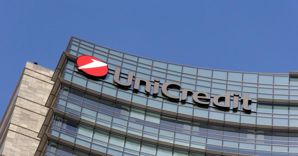Massimo Tononi is the president of the Monte dei Paschi di Siena from 15 September 2015.
President Tononi, was born a new Monte dei Paschi?
“No, it’s the old Monte who found the energy to continue its journey.”
Satisfied?
“Very. It was done a terrific job. Monte dei Paschi continue its secular history, relieved of 27 billion gross NPLs and increased 40% non-performing loan coverage can, from the current 29. “
man the hard way to understand how a bank can get to pay so much money to customers unable, then, to return it …
“my reading of the events, but remember that they are in Siena for ten months, it is partial. They are certainly mistakes were made in the distant past. It should be remembered that the long economic crisis has weighed especially on SMEs, which are the typical customers of a bank which Mps. “
a crisis from which you came through, first and foremost, to the work of Viola .
“In other times, if I could, I would title an equestrian statue to Viola and his team, the ability, the spirit of sacrifice, integrity. But in that statue, let me say, they have to find space in addition to the management even 5 million customers who have continued to believe in the bank and 25,000 employees in recent years so difficult, a thousand turmoil, they never stopped working with great dedication. “
What do you expect from the stock exchange today?
“I feel a deep sorrow in the face of large losses of our shareholders, and I confess that this sorrow is not mitigated by the knowledge that even investors around the banking sector, in Italy and in Europe, have not had a lot of satisfaction. Now, the program announced last Friday sees Mps present a new budget structure, very different from the previous. All that I am convinced will be very rewarding for our shareholders. In addition, our plan is for the junior tranche of the suffering, is distributed pro rata to existing shareholders. Another way to share the path of recovery of Mps. “
So you wait a value of up title today?
“the markets are difficult to predict. But eight large international banks have expressed confidence in the plan approved Friday by signing a pre-underwriting commitment to the capital increase. “
last Thursday, at the last moment, came the proposal by Corrado Passera and UBS. Proposal, says the former minister, she fed only to bocciarla. Why this about-face?
“I have been contacted in recent weeks by Corrado Passera, who has informed me that you have to study a project of Mps. In light of the undoubted authority of Dr. Passera I invited him to pursue it and present it. When it came, last Thursday, in the meantime we were now coming, as in fact happened the next day, to a conclusive agreement and in the sign of discontinuity with the ECB, the fund Atlas and a consortium of high quality banks. The board of directors on Friday has scrutinized the draft presented by Dr. Passera and unanimously, apart from my abstention, considered that it was not necessary a meeting. “
it remains that the rescue of the Monte would not have been possible without government intervention .
“Do not rescue but speak of market operation that does not involve any state intervention. So as it has been fully transposed by the European authorities. IOC said the dialogue with the Government and the Bank of Italy was intense and very assiduous. The proximity of the Minister Padoan was important to me. Also there is no doubt that the guarantee on Gacs suffering is a central point in this plan. So how was decisive constructive relationship established with the Fund Atlas, marked by seriousness and rigor. He also contributed in a decisive way, the spirit of cooperation and support of the ECB in the days immediately preceding the announcement of our operation. “
July 31, 2016 (amendment July 31, 2016 | 23:00)
© ALL RIGHTS RESERVED




